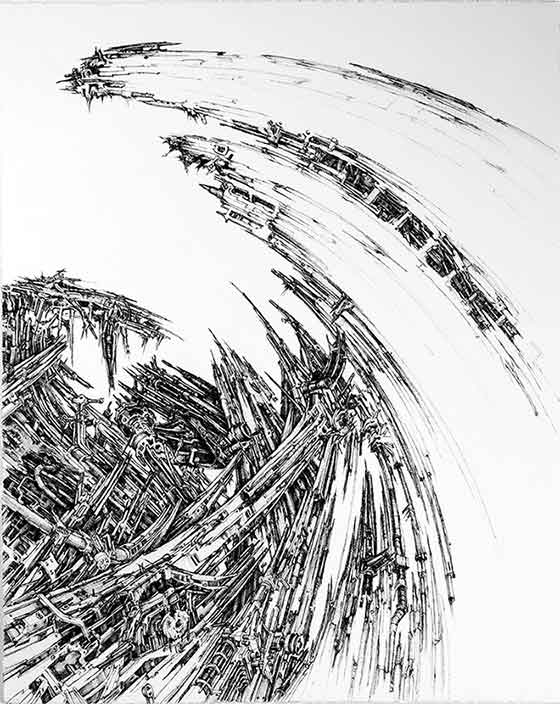Color pencil is convenient for exploring the nature of color. It's cleaner and more durable than chalk pastel, but it's very slow especially for larger drawings. I no longer have the time or patience for it, but the drawings are still interesting.Color Gallery
Color

Ink

Ink drawing is a relatively unforgiving form. Once the mark is made, it's usually part of the final work. Waterproof, acrylic inks eliminate erasing as an option. With heavy paper and a deft touch with a freshly sharpened X-Acto blade, it's possible to remove a thin layer of paper and eliminate truly offensive errors, but this is not for the faint of heart. Invariably, doing that changes the surface of the drawing, and you can only do it once in an area or you run the risk of cutting right through the paper.Ink Gallery
Graphite

Graphite drawing is a fancy way of saying that I use pencils. They're so ordinary, ubiquitous, and forgiving. Using them with skill is more difficult than one might think, but I use them well enough to do my work. I use an additive mark-making process. I build up my surface on the sharpened point of my pencils, using the pencil to apply graphite to the surface. I do my best to preserve the surface of the paper, applying sufficient force to mash the paper fibers only as a last resort for reinforcing the darkest darks. The results are reflected in my drawings.Graphite Gallery
My Art
Much of my work falls into the realm of figurative abstraction. I think the suggestion of forms and objects is far more compelling than presenting the objects themselves.
When a form or object is suggested, viewers are attracted. They think and interpret. They contemplate the composition and wonder whether they're seeing the intended image. They see things I never considered. It's interesting and their experience of the work is unique.
When the object is presented as the object, it is immediately recognized and interpretation stops. "Oh, it's a ___." Then, the nature of interpretation abruptly changes. It is no longer a matter of experiencing the work. It is a matter of evaluating formal qualities.
People ask different questions. Is the object well-drawn? Is it convincing? Is it well-proportioned? Is it well-rendered? Are their problems in the execution?
It is a different and far less compelling analysis that deals more with the artist's technical skill than with the viewer's experience of the work.

